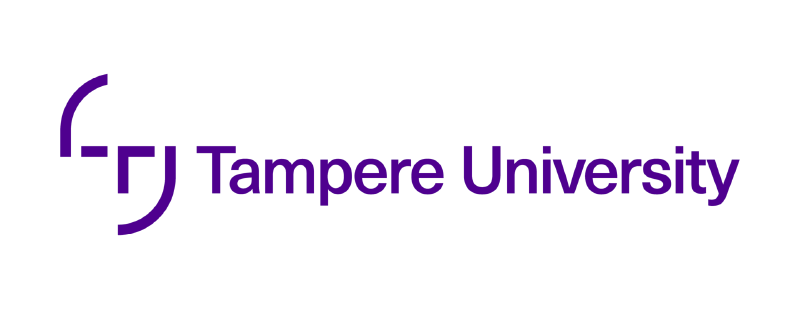The questions are usually of an open-ended nature, but they can also be close-ended questions. Open-ended questions require the interviewee to elaborate, give an account, expound and/or reflect on what is being discussed. Close-ended questions usually just require a simple answer and can often be answered with one or a few words (or even a simple ‘yes’ or ‘no). Also, different questioning techniques can be used. The interviewer or researcher usually records the interview through the use of audio or video recording devices. They may also take notes during the interview. The recorded data is then transcribed (transferred into text form) for analysis. The potential of the interview method to produce rich and meaningful data makes it a popular methodological choice among researchers in the field of social sciences.
Interview Structures
There are three structural variants in the interview method: structured interviews, unstructured interviews, and semi-structured interviews [4] (e.g., Brinkmann, 2013).
Structured Interviews are interviews that closely and systematically follow a particular structure or order. They are structured towards a particular direction with the intent of obtaining relevant research data towards answering the research questions. Questions are planned and scripted in advance and followed closely and in order. There is not much room for flexibility or reflexivity in questions in this format, but it does make for easier analysis and comparison between different participants.
Unstructured interviews are interviews in which there are no planned or scripted questions that are prepared in advance. Instead, there are only topics or themes of discussion, and the discourse is allowed to flow freely as questions arising through natural dialogue are addressed. This interview format provides the most flexibility and reflexivity. Interviewers can obtain varied and rich data through this method, and it may also help interviewees feel more at ease because the interview essentially feels like a regular conversation. It may, however, be more complicated to analyse unstructured interviews, especially when it comes to comparing participants’ responses.
Semi-structured interviews are the middle ground between structured and unstructured interviews and have the potential for offering researchers the benefits of both of these methods. In semi-structured interviews, some of the questions are planned and scripted in advance. Still, the interviewer leaves room for further questions and discussion which arise during the interview process itself [5](e.g., Freebody, 2003). This allows interviewers to plan questions that are specifically geared towards their research questions and data that they need while also allowing them to be flexible and reflexive.
Interview types and mediums
Different types are:
Individual Interviews- one-on-one interviews with a single individual.
Pair or Group Interviews - typically group interviews include around 3-10 participants who are interviewed simultaneously in a group. Pair or group interviews are a good option when interviewing individuals who may find one-on-one interviews overwhelming or intimidating, such as children and young people, shy persons, or marginalised individuals or groups.
Different mediums are:
face-to-face Interviews, meaning they are conducted in person, at a time and venue as agreed upon by the interviewer and the participants. This is most preferred and practiced format.
Phone or video interviews conducted via phone or video call have increased in popularity in recent years and has seen exponential growth in this post-COVID-19 research reality.
Email/Online interviews are conducted via email or other online platforms. The interviewer or researcher sends the participants the questions as an online text gets written responses. The written interview format, however, is the least flexible option out of these as it only works with structured questions and makes it difficult to ask follow-up questions or be reflexive.
Pros
individual interview enables to take the time needed to speak and reflect.
individual interview enables freedom to be more flexible and reflexive.
group interviews are excellent for interaction, discussion, idea-sharing, and reflection between participants.
Group interview may be more time and resource optimal compared to individual interview
Cons
individual interview is the more time consuming of the two interview types and thus requires a greater commitment in terms of time, effort, and resources.
Group interviews may not produce as rich and layered data per individual as individual interviews do.
Group interviews also require diligence by the interviewer in ensuring that all participants contribute somewhat equally towards the discussion.
-
Viberg, Grönlund, Å., & Andersson, A. (n.d.). Integrating digital technology in mathematics education: a Swedish case study. Interactive Learning Environments, ahead-of-print(ahead-of-print), 1–12. https://doi.org/10.1080/10494820.2020.1770801
-
Brikše, Freibergs, V., & Spurava, G. (n.d.). Children’s Internet Competence vs. Self-confidence and Self-comfort: Case Study of Latvia. In Information Literacy. Lifelong Learning and Digital Citizenship in the 21st Century (pp. 233–242). Springer International Publishing. https://doi.org/10.1007/978-3-319-14136-7_25
-
Global Kids Online: Conducting qualitative and quantitative research with children of different ages
-
Arksey, H., & Knight, P. T. (1999). Interviewing for Social Scientists. SAGE Publications, Ltd https://www-doi-org.libproxy.tuni.fi/10.4135/9781849209335
-
Brinkmann, S. (2013). Qualitative Interviewing. Oxford University Press.
-
Freebody, P. (2003). Qualitative Research in Education: Interaction and Practice. London; Thousand Oaks, Calif: SAGE Publications.
-
Kvale, S. (2007). Introduction to Interview Research. In Doing Interviews (pp. 2-10). SAGE Publications, Ltd, https://www-doi-org.libproxy.tuni.fi/10.4135/9781849208963
-
Legard, R., Keegan, J., & Ward, K. (2003). In-depth Interviews. In Ritchie, J., & Lewis, J. Qualitative Research Practice: A Guide for Social Science Students and Researchers. SAGE Publications.
-
Lewis, J. (2003). Design Issues. In Ritchie, J. & Lewis, J. Qualitative Research Practice: A Guide for Social Science Students and Researchers. London: Sage Publications.
-
Pessoa, A. S. G., Harper, E., Santos, I. S., & Gracino, M. C. da S. (2019). Using Reflexive Interviewing to Foster Deep Understanding of Research Participants’ Perspectives. International Journal of Qualitative Methods. https://doi.org/10.1177/1609406918825026
-
Rapley, T. (2004). Interviews. In Seale, C., Gobo, G., Gubrium, J. F., & Silverman, D. (Eds.), Qualitative Research Practice (pp. 16-34). SAGE Publications Ltd, https://www-doi-org.libproxy.tuni.fi/10.4135/9781848608191

